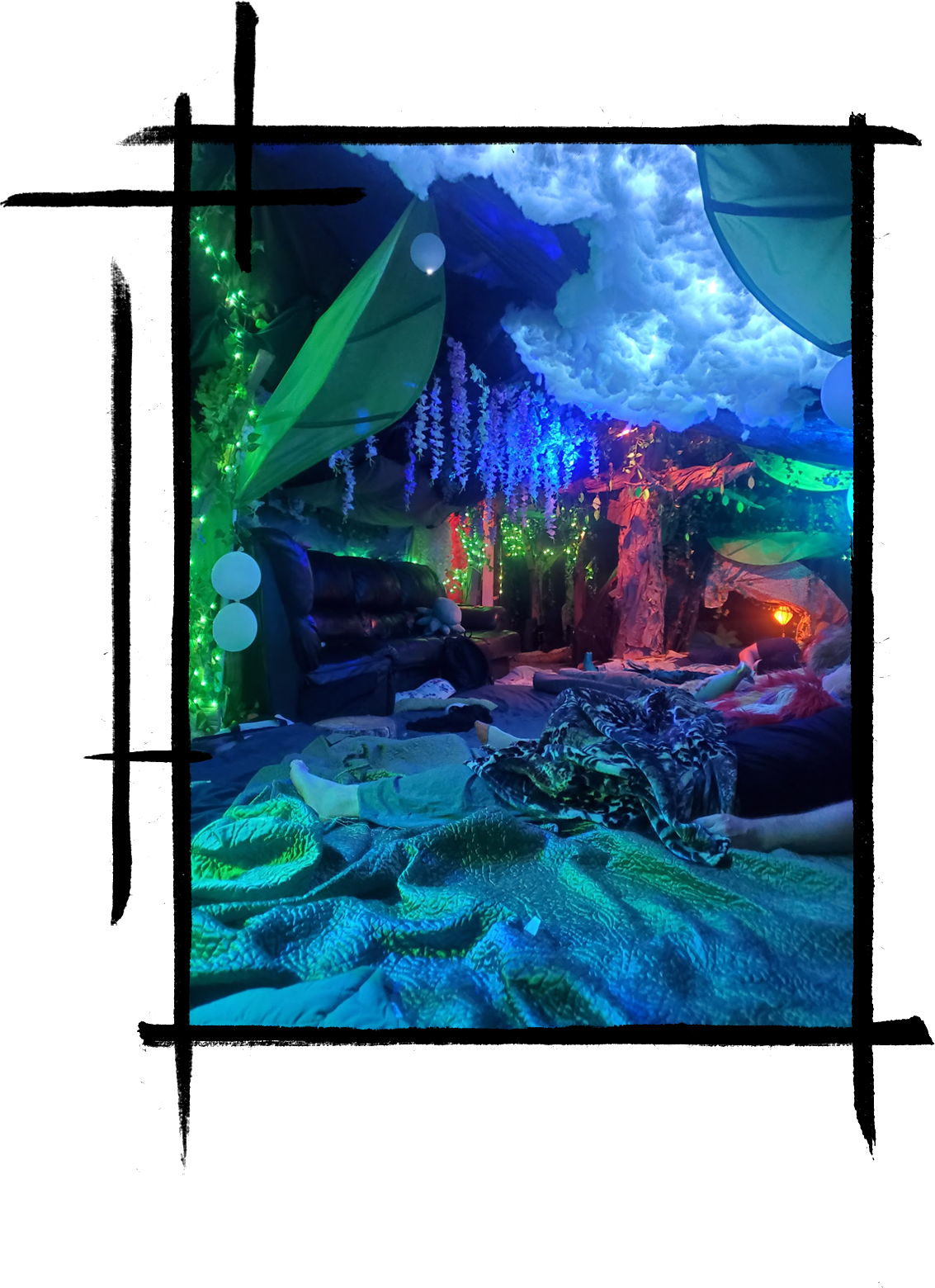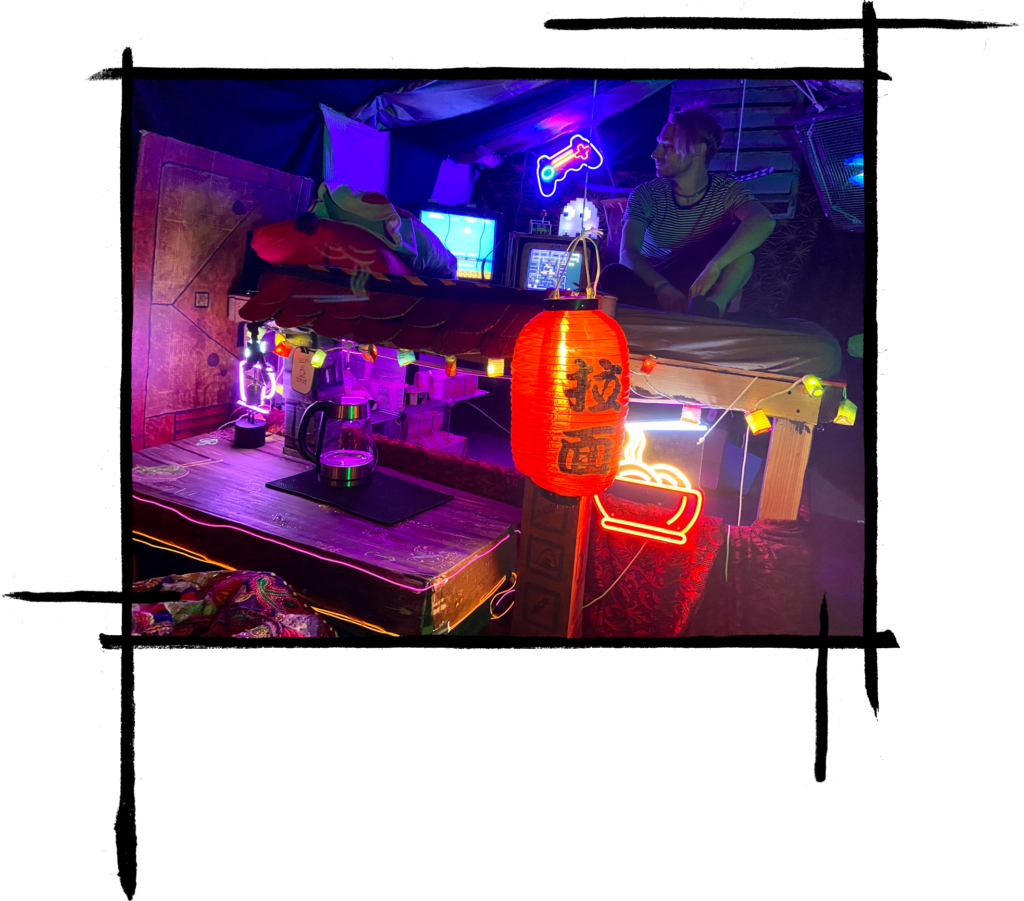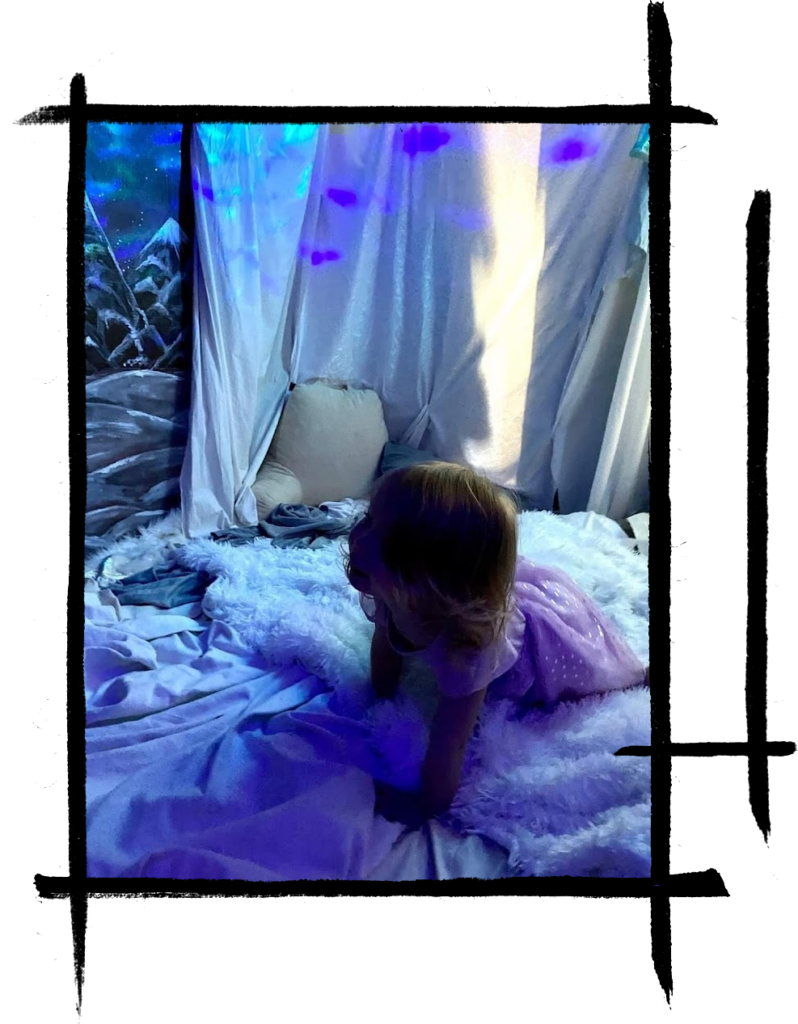
Being a grown-up means that you just can’t make blanket forts the way you did when you were a kid, right?
…You have to make them BIGGER.
The Fort of July is the greatest blanket fort in the world, an overnight slumber-party experience unlike anything you’ve ever known.

The most adventurous explorers will choose to solve the Main Quest. The fort has now been running for ten years, and with each iteration, its lore deepens. Biomes grow, evolve, and flow into each other in new ways, driving or responding to that year’s story.
Characters exist in a liminal sense, as though you’ve just missed them. The evidence of their lives and relationships are integrated into the spaces, and drive the story.
Each interconnected room of the fort embodies a unique “biome,” or environmental character: Forest, Underwater, Tundra, Cyberpunk, and an Alien World.
The aesthetic goes beyond static set dressing; all five senses are engaged to tell the story of each biome, and to enhance the stories our explorers create for themselves.

Perhaps no character is more mysterious than The Proprieter, the name our explorers have given to whoever built the Ramen Shop in the Cyberpunk Biome.
This space has a window that gazes out onto a glowing futuristic cityscape, and yet it’s filled with video games from the past. Floating holographic screens contrast with the arcane summoning circle painted on the ceiling.
The walls are adorned with neon signs, each a symbolic nod to another biome. This space seems to be aware that it is joined to countless other places and times.
Did The Proprieter discover this interplanar crossroads… or create it?
Not every explorer will uncover all the secrets of the fort.
The Wry Cupboard, a hidden one-customer-at-a-time speakeasy, always finds a new place to vanish into every year.
Some covert mini-biomes appear only once, and then become swallowed by the “Not There” in years hence, leaving only a literal easter egg behind for future explorers to discover. The Ice Cave, only accessable for a single year through a mountain pass in The Tundra, was one such space.
The most precious of secrets is that which can only be found at the end of the Main Quest. Not all will try to complete it, and not all who try will succeed, but those who do will cherish their victory, and be cherished by all.
* * *
My goal with the fort is to create a wonderland that inspires the inner child in each of us to emerge. Connecting with this wonder makes each moment in the fort as memorable as it can possible be.


The Fort has always run on a “tip jar” system that seeks mainly to recoup the costs of production. I have no plans to change this model; profits are not incentive enough for me to commercialize how I approach the beautiful community that’s emerged around this event.
However, the books are well-kept enough to, as a thought experiment, determine what it would take to produce this event.
The fort is meticulously mapped and planned. The majority of the structure is built on SCH40 PVC pipe and furniture-grade joints; these materials are strong, versatile, and portable.
The fabrics involved can be treated with fire retardant to meet safety standards.
The itemized budget for building the fort from scratch comes out to roughly $20,000. This only includes materials, not labor; it takes a team of 8 experts in fort construction (our “master builders”) five full days to build the fort, from a blank space to the finished wonder.
Total startup costs would also include $14000 in labor for the master builders ($1750/week rate for each), and $12600 for a leading week of venue rental, bringing the total initial investment to $46500 (sans advertising).
This figure doesn’t include marketing costs; advertising isn’t my area of expertise, and I prefer not to make numbers up.
The biggest operating cost by far is event space rental, accounting for 2/3 of the costs each week. The venue must be a residence with adequate interior space and ample parking in nearby streets, with a yard and at least three bathrooms. Because the full event can only run on Fridays and Saturdays (it’s a sleepover, after all!) the challenge is producing enough revenue to support five days of unused event space.
The fort easily does so! The existing build reaches max capacity at 100 people, a third of which would be allowed to buy overnight tickets for an additional fee. Even with reasonably priced tickets, drinks, food, AND providing tea and ramen as free options (tacos are only served until 11 pm), the fort breaks even with operating costs at 2/3 capacity, and produces over $4k in profit per night at max capacity.
Guests are encouraged to bring their own sippy cup or travel mug, because spill-proof drinking vessels are required in the fort. That said, historically, a good chunk of guests forget theirs, so they’d be for sale, along with a name tag so they can tell them apart from similar ones. For similar reasons, we’d have toothbrush and toothpaste kits. The shop would also sell pajamas and onesies, because wearing jeans to a blanket fort party is a mistake that few want to make all night.
We could raise additional revenue by using the space during the week; Mondays and Wednesdays give us a day between to repair and refresh the space after an afternoon of kids’ parties. The main event carries the cost of the venue rental on its BACK, so weekdays are treated more like “bonus” days that only need to be profitable against personnel and cleaning costs. These mini-events could pulse up to twice per day, once in the afternoon and once in the evening. Adults would be limited to two drink tickets each, because we want them to pay better attention to their kids.
The fort could pay for its startup-from-scratch costs in four weeks of operation at capacity; every four weeks after that generates another $46,000 in net profits.
The schedule could be expanded with additional weekday events, even at lower mean attendance; with much lower profit thresholds, they help the bottom line disproportionately. Increasing the number of active weekdays to 4, even at 66% capacity, delays recouping startup costs by only a few weeks.
The fort is a powerful event! If running it for ten years has taught me anything, it’s how wide the audience is that has been clamouring for anything like it for their entire adulthood.
